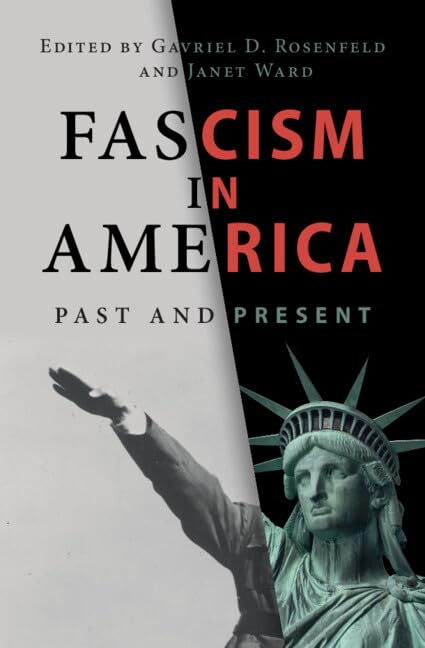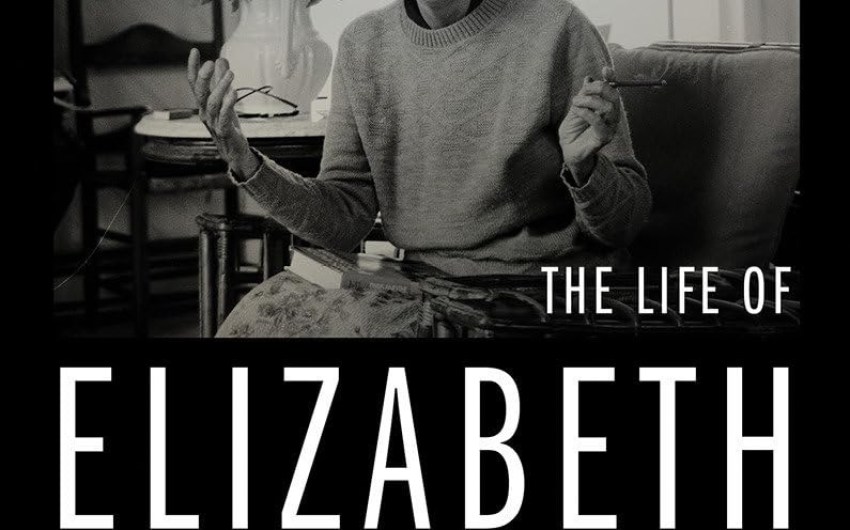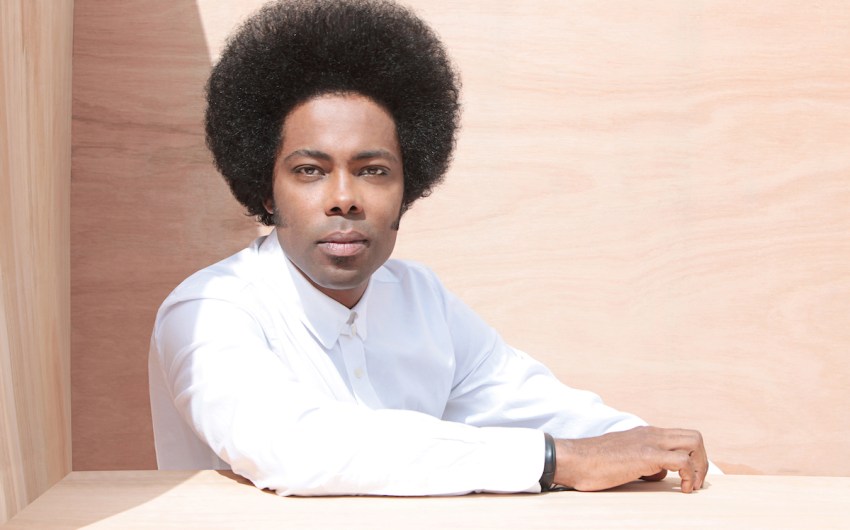Review | ‘Fascism in America: Past and Present,’ Edited by Gavriel D. Rosenfeld and Janet Ward
Collection Has Particular Relevance in the 2024 Election

One of the animating questions in the essays that comprise Fascism in America is whether or not our national political arrangement has reached a point where it is uniquely vulnerable to being overwhelmed by a fascist movement.
Another is whether or not Donald Trump is a fascist.
Anyone paying even a modicum of attention since 2015 knows that a distinct shift — in rhetoric, tone, and behavior — has taken place in American politics, the most notable shift being the frequency with which Trump, his followers, and his allies endorse violence to achieve political goals.
In their introduction, the editors, Gavriel D. Rosenfeld and Janet Ward, first grapple with the question of whether Donald Trump is in fact a fascist. As with most political questions, reaching a definitive answer is complicated, and it requires weighing not only what contributed to the rise and character of European fascism in the years between the two world wars in the 20th century, but the history of overtly or adjacent fascist groups and their activities in America.
While this is a scholarly collection, heavy with footnotes, that will most likely be read by other scholars, its historical survey, analysis and conclusions are essential in order to grasp the stakes in the 2024 general election. Donald Trump has made clear his aims if he wins a second term. But even if Trump is rejected by the electorate and/or convicted in one or more of the criminal cases against him, Trumpism is likely to live on. As Geoff Eley notes in his chapter, “Liberalism in Crisis,” we have already experienced the single most important fascist breach, which occurred on January 6, 2021: “The turning to political violence as a solution for worsening society-wide difficulty.”
We should engage in debates and critique Donald Trump’s fascist tendencies, demonstrated during his presidency and since leaving office, along with his authoritarian temperament, cruelty, and willingness to use state violence. From the hostility toward migrants at the southern border and targeting the nationwide demonstrations in defense of Black lives after George Floyd’s murder, to the assault on the Capitol on January 6, and his threats against judges, prosecutors, and witnesses, as well as his overt admiration for autocrats the world over, Trump has broken with previous American presidents.
A key idea in the essay “America First” by Matthew Specter and Varsha Venkatasubramanian is that fascism didn’t perish with Hitler and Mussolini, but exists as a “kind of repertoire of techniques, gestures, and passions that can be reactivated with different emphases in different contexts.”
Such passions have existed in America since the 19th century. Consider, as Linda Gordon does in “The American Fascists,” how the values of the Ku Klux Klan, which was founded as a response to Reconstruction and experienced a remarkable resurgence and growth in membership in the years leading up to World War I (a period of acute social and political unrest, labor strife, and heated public debates about immigration), are in accordance with the values of classical, or European, fascists. Gordon sums up those values this way: “That diversity leads to chaos; that a nation’s strength requires homogeneity; that some categories of people are inferior and/or evil.”
This Second Klan movement in the 1920s drew its power from the nativism, anti-Semitism, and racism that was already prevalent in the United States. These deeply held sentiments erupted and subsided, but never entirely abated; they rose in fierce, often violent opposition to the Civil Rights movement; fueled Patrick Buchanan’s campaigns for president in 1992 and 1996; and surged anew after the election of the nation’s first Black president in 2008, stimulating unprecedented growth in hate groups and unlawful militia movements like the Oathkeepers and Three Percenters.
By the time Donald Trump came on the scene in 2015, as Geoff Eley points out, the landscape had been dramatically altered. The substantial democratic and economic gains of the post–World War II period had been systematically weakened by neoliberal economic policies. Over the course of four decades, the economic, political, and technological transformation was “so destructive that the political capacities for organizing democratic agency on a sufficiently sustained and efficaciously collective scale may have ceased being available.” When the economy cratered in 2009, millions of people seemed to lose faith in the government and its institutions. The extreme political polarization that coincided with the crash contributed to the perception that our institutions shielded the wealthy and privileged at the expense of everyone else.
Fascism appears as a response to social and economic conditions, and widely held fears and insecurities. The latter can be stoked by a skilled demagogue like Donald Trump. Trump had the ability and means to summon nostalgia for a glorified past and inspire fantasies of white victimhood. As his anti-democratic rhetoric and hate speech became normalized, so did the idea that political violence is not only acceptable, but necessary to stop an array of internal enemies.
For purposes of examining the fascist undercurrent that has been a feature of the United States for most of its history, Part III, “White Anti Democratic Violence and Black Antifascist Activism,” is very instructive. In the early 1940s, Black intellectuals and civil rights activists, along with the Black press, most notably the Pittsburgh Courier, critiqued the war against Germany by noting, “If Hitler wins, the poll-taxers of the south who now use lynching as a weapon of terror will use it as a weapon of extermination.”
Beginning in 1942, the Courier promoted the Double V Campaign, which proposed pursuing victory from external as well as internal enemies. The paper, and many others, called for full citizenship for Black Americans based on their wartime service. It seemed paradoxical that Blacks fought against aggression, racial hatred, and tyranny abroad while suffering those same conditions on home soil. Many Black war veterans returned home and discovered that their service provided them no protection against racial terror and injustice. What happened to Isaac Woodard in 1946 was but one of many examples of white intolerance. Woodard was assaulted by white police officers in South Carolina while wearing his military uniform, losing his eyesight in the process.
In the epilogue, Ruth Ben-Ghiat, the author of the 2020 book Strongmen: Mussolini to the Present, notes that “the ascent of the autocratic and brutal Trump to the White House in 2016 was a gift to all American extremists, including white supremacists.” Ben-Ghiat also warns that in this century, strongmen come into office through elections and then manipulate the electoral process to remain in power.
This review originally appeared in the California Review of Books.
Premier Events
Thu, May 02
5:00 PM
Santa Barbara
Things with Wings at Art & Soul
Sat, May 04
10:00 AM
Lompoc
RocketTown Comic Con 2024
Wed, May 01
7:30 PM
Santa Barbara
American Theatre Guild Presents “Come From Away”
Thu, May 02
5:00 PM
Santa Barbara
100th Birthday Tribute for James Galanos
Thu, May 02
5:00 PM
Santa Barbara
Meet the Creator of The Caregiver Oracle Deck
Fri, May 03
4:00 PM
Santa Barbara
Santa Barbara Fair+Expo “Double Thrill Double Fun”
Fri, May 03
8:00 PM
Santa barbara
Performance by Marca MP
Sat, May 04
10:00 AM
Solvang
Touch A Truck
Sat, May 04
11:00 AM
Santa Barbara
Mental Wellness Center’s 28th Annual Arts Faire
Sat, May 04
11:00 AM
Santa Barbara
Community History Day
Sat, May 04
3:00 PM
Solvang
The SYV Chorale Presents Disney Magic Concert
Sat, May 04
7:00 PM
Santa Barbara
A Star Wars Cantina Celebration: Renegades, Rebels, and Rogues
Thu, May 02 5:00 PM
Santa Barbara
Things with Wings at Art & Soul
Sat, May 04 10:00 AM
Lompoc
RocketTown Comic Con 2024
Wed, May 01 7:30 PM
Santa Barbara
American Theatre Guild Presents “Come From Away”
Thu, May 02 5:00 PM
Santa Barbara
100th Birthday Tribute for James Galanos
Thu, May 02 5:00 PM
Santa Barbara
Meet the Creator of The Caregiver Oracle Deck
Fri, May 03 4:00 PM
Santa Barbara
Santa Barbara Fair+Expo “Double Thrill Double Fun”
Fri, May 03 8:00 PM
Santa barbara
Performance by Marca MP
Sat, May 04 10:00 AM
Solvang
Touch A Truck
Sat, May 04 11:00 AM
Santa Barbara
Mental Wellness Center’s 28th Annual Arts Faire
Sat, May 04 11:00 AM
Santa Barbara
Community History Day
Sat, May 04 3:00 PM
Solvang
The SYV Chorale Presents Disney Magic Concert
Sat, May 04 7:00 PM
Santa Barbara
























